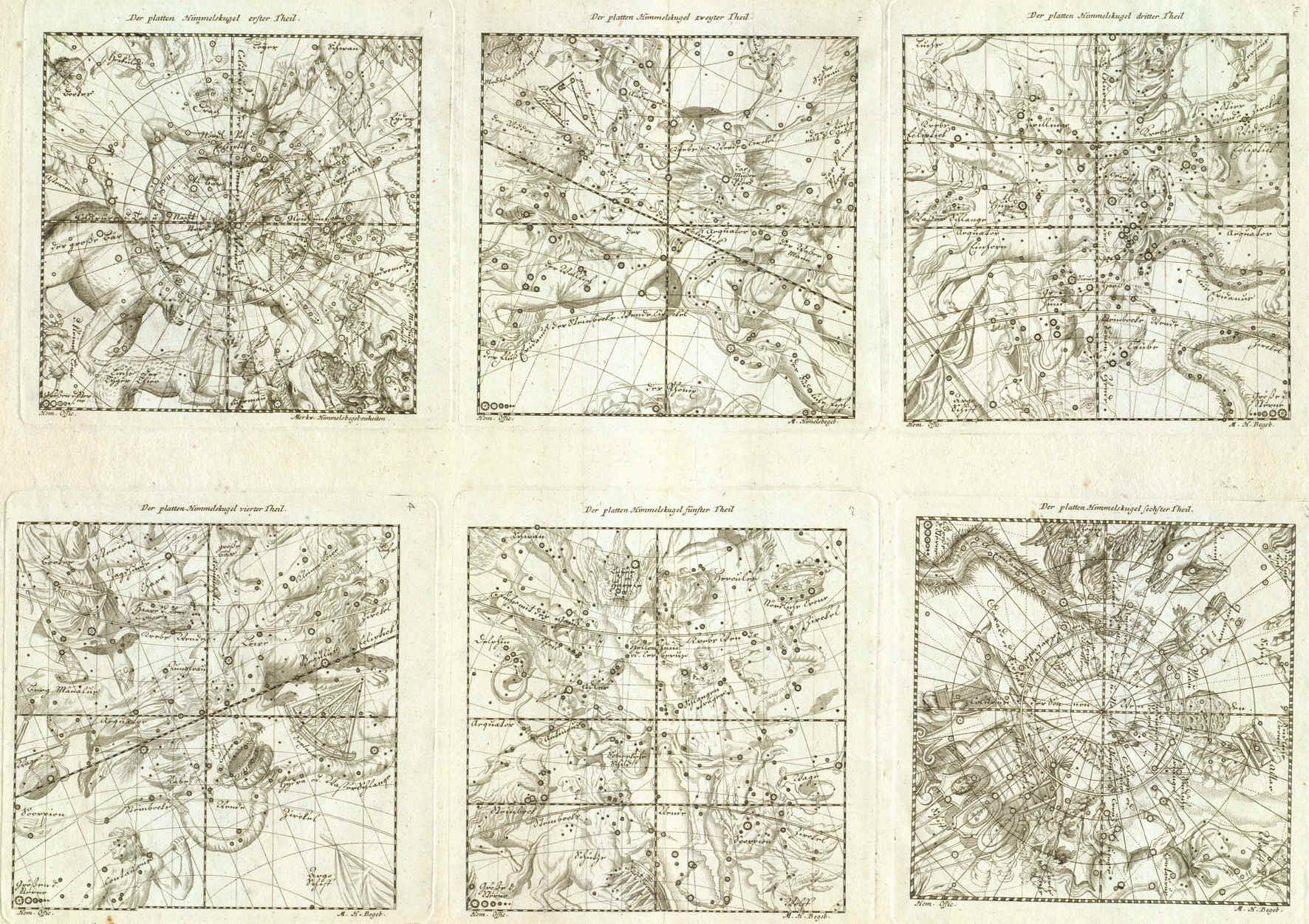
|
Johann Baptist HOMANN |
Globus terrestris (et Globus coelestis). juxta observationes Parisienses Regia Academia Scientiarum constructus, Nuremberg 1702-1715
|
Johann Baptist HOMANN
Globus terrestris (et Globus coelestis). juxta observationes Parisienses Regia Academia Scientiarum constructus, Nuremberg 1702-1715

Per cortesia di
https://www.crouchrarebooks.com/globes-and-planetaria/homanns-rare-pocket-armillary
Pubblico le immagini e l’articolo che vengono dedicate ad una rara opera di J.B. Homann che riproduce una piccola sfera armillare contenuta in un globo terrestre vuoto e apribile che a sua volta è contenuto in una sfera di 6,5 cm di diametro la superficie interna della quale riproduce il cielo stellato e le sue costellazioni in proiezione polare eclittica concava.
L’ articolo è pubblicato su Sic itur ad astra, il catalogo di stampe e libri d’arte del 2023 della Galleria Daniel Crouch Rare Books con sede a Londra e a New York che lo vende per l’importo di 135.000 dollari.
Titolo:
Globus terrestris. juxta observationes Parisienses Regia Academia Scientiarum constructus.
Author:
HOMANN, Johann Baptist
Publication place:
Nuremberg
Publisher:
Opera loh. Bapt. Homanni Geographi
Publication date:
c1702-1715
Physical description:
Globe, 12 hand-coloured engraved paper gores, over two wooden concave hemispheres, paste-board armillary sphere inside, housed within original black morocco over paste-board clamshell case, decorated with fine gilt daisy flower tools and fillets, with hook and eye, lined with two sets of 12 hand-coloured engraved celestial gores. Short split to globe in the northern hemisphere with early repair. In addition to the terrestrial and celestial globe, this pocket globe features a rare armillary sphere, which is revealed by opening the hollow wooden terrestrial globe.
Dimensions: Diameter: 64mm (2.5 inches).
Notes
The earliest state, previously unrecorded, of Homann’s only known pocket globe, here with rare ‘nesting’ armillary.
Biography
Johann Baptist Homann (1664–1724) was a German geographer and cartographer. He
was educated as a Jesuit and destined for an ecclesiastical career, but
converted to Protestantism and then worked as a notary in Nuremberg. He founded
a publishing business there in 1702, and published his first atlas in 1707,
becoming a member of the Academy of Sciences in Berlin in the same year. He
collaborated with Johann Gabriel Doppelmayr on his book ‘Kosmotheoros’,
which represented the solar system based on the Copernican system laid down by
Christiaan Huygesn.
Homann was appointed Imperial Geographer to Charles VI in 1715, and produced his
great work the following year, ‘Grosser
Atlas uber die ganze Welt’. Homann was well placed to take advantage of the
decline of Dutch supremacy in cartographic publishing, and he became the most
important map and atlas producer in Germany. After his death, the company was
continued by his son Johann Christoph. When Johann Christoph died in 1730, the
company continued under the name of Homann Heirs until 1848.
Geography
Homann is only known to have produced one pocket globe. Although the present
example reflects an earlier issue than previously identified, it does not
include Homann’s title as Imperial Geographer, which he received in 1715. The
globe features cartography plotted from recent observations of the Académie
Royale des Sciences in Paris. In addition to his collaboration with Doppelmayr,
Homman published the gores of George Christoph Eimmart’s globes in his atlases,
which would have provided additional cartographic information. The equator is
graduated and shows ecliptic and prime meridian. None of the Antarctic continent
appears, nor is there a coast to northwestern Canada, or eastern Australia. “New
Zeeland” and “Diemans
Land” are shown only in part, and California is shown as an island.

Astronomy
The celestial cartography appears on the inside of the clamshell case is
graduated in degrees, the ecliptic is graduated in days of the houses of the
Zodiac with sigils and the constellations are brightly coloured and depicted by
mythical beasts and figures and some objects, with names in Latin. A cartouche
gives the stars and nebulae to six orders of magnitude.

Armillary sphere
The miniature armillary sphere, with graduated meridian and three latitudinal
bands, contains a miniature sun at its centre.
Rare. Only one institutional example is known: that in British Library, although
the BL example exhibits different form of the armillary sphere.

Bibliography
Sumira, Sylvia. (2014). The art and history of globes. London: The British Library
Dekker, Elly. (1999). Globes at Greenwich: A Catalogue of Globes and Armillery Spheres at the National Maritime Museum in Greenwich. Oxford: Oxford University Press and the National Maritime Museum
Globo celeste



Globo terrestre

Sfera armillare

Altre opere di Johann Baptist HOMANN:
Planiglobii Terrestris cum utroq Hemisphaerio Caelesti Generalis Exhibitio, Hemisphaerium Boreale, Hemisphaerium Australe, Norimberga 1707....

http://www.atlascoelestis.com/Homann%201707.htm
Homann Offic.
Der platten Himmelskugel erster (zweyter, dritter, vierter, fünfter, sechster) Theil, Norimberga 1716-30

http://www.atlascoelestis.com/Homann%201716.htm
Sulla vita e la produzione cartografica di J. H. Homann può essere esaminata la seguente scheda pubblicata in Astronomie in Nürnberg das astronomieportal in der Region:

https://www.astronomie-nuernberg.de/index.php?category=personen&page=homann-jb
di FELICE STOPPA
MARZO 2023
